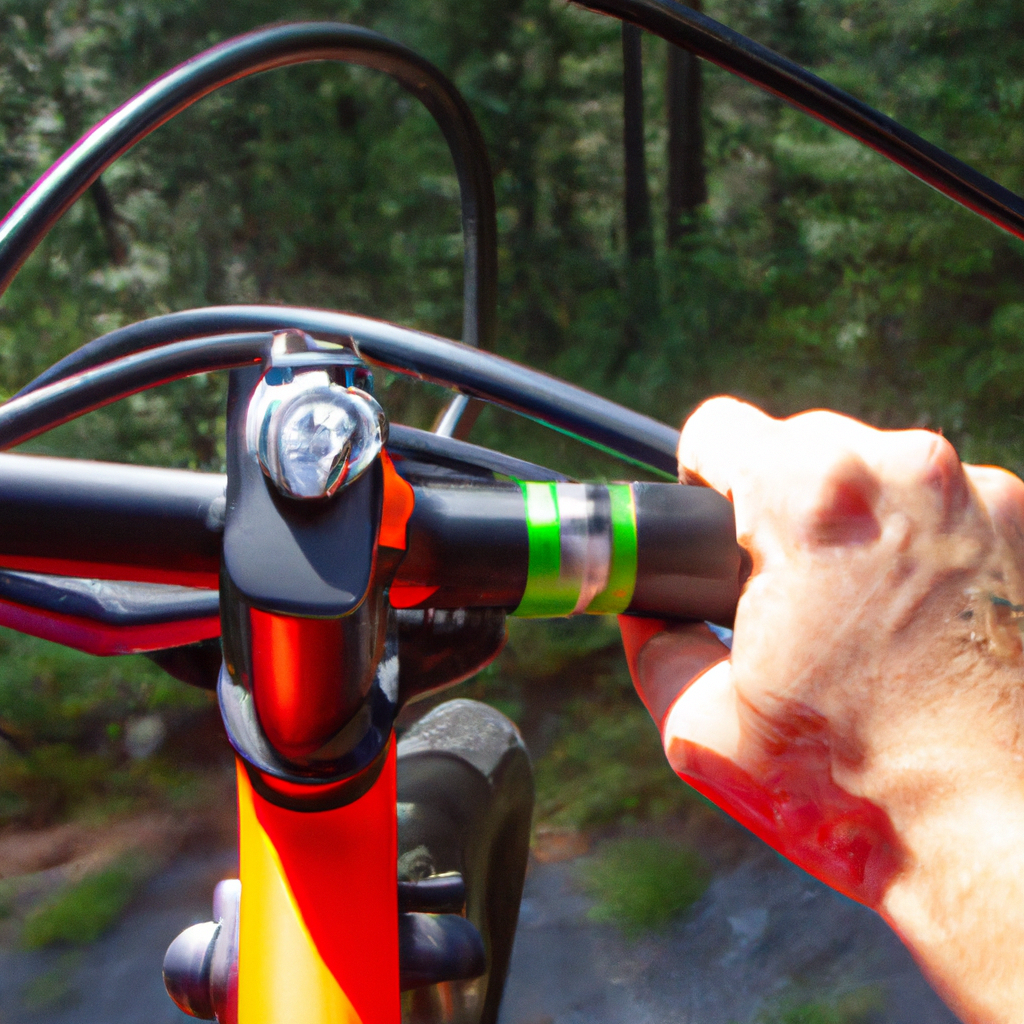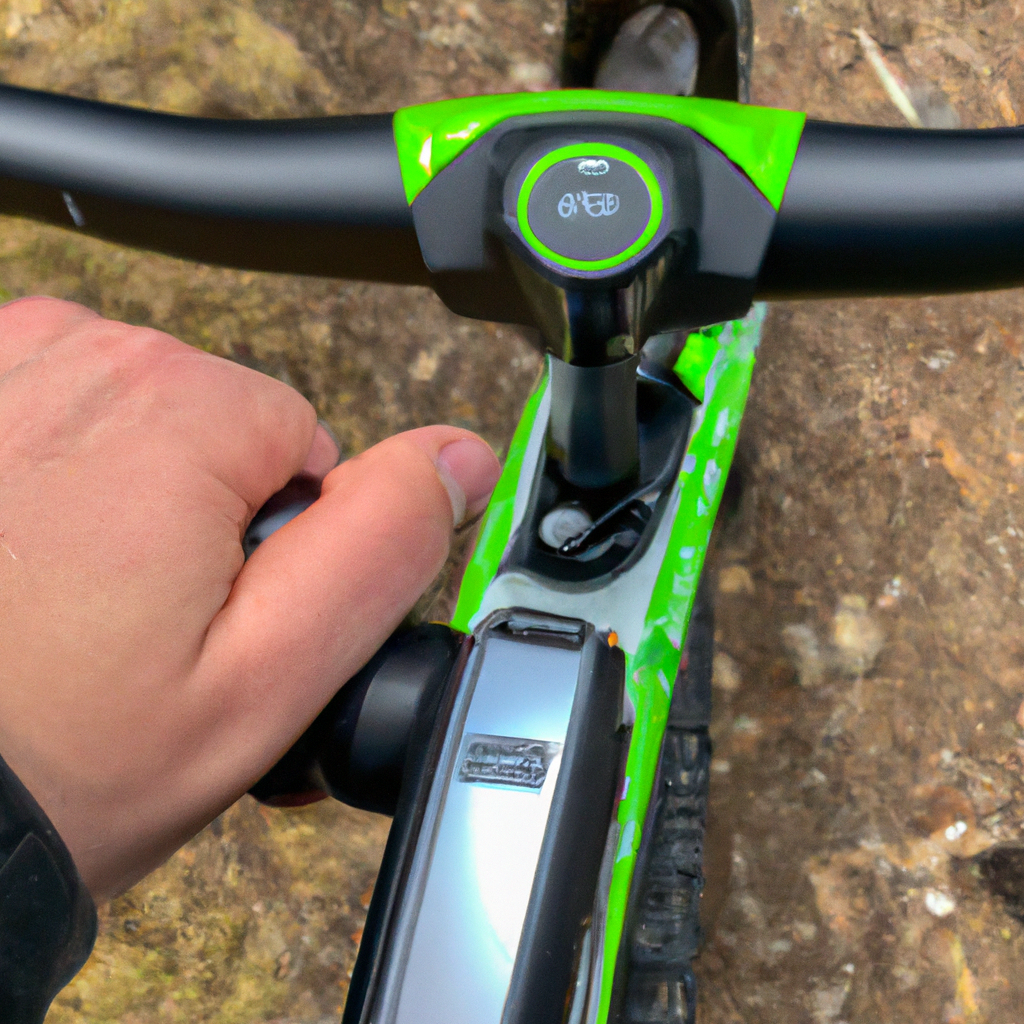Hey there, E-Bike enthusiasts! Get ready to take your riding skills to the next level with our “Advanced Braking Techniques for E-Bikes” article. In this section, we’re diving into the intricate technical aspects of e-biking, specifically focusing on braking techniques. Whether you’re an intermediate or advanced e-bike rider, this article is for you. We’ll cover everything from optimizing your braking for speed and efficiency to understanding the complexities of regenerative braking. So buckle up and get ready to enhance your e-biking experience with these advanced techniques!

Understanding the Basics of E-Bike Braking
Hey there, fellow e-bike enthusiasts! Today, we’re diving into the basics of e-bike braking. Braking is an essential skill for any rider, and understanding the different types of brakes commonly used on e-bikes is the first step towards becoming a confident and skilled rider.
Types of brakes commonly used on e-bikes
E-bikes typically use two main types of brakes: rim brakes and disc brakes. Rim brakes, such as V-brakes or caliper brakes, use pads that grip the rim of the wheel to slow it down. On the other hand, disc brakes utilize a rotor attached to the wheel hub and calipers that clamp down on the rotor to stop the bike. Both types of brakes have their advantages and it’s important to understand which type is on your e-bike.
Principles of effective braking
Effective braking is crucial for maintaining control and safety on your e-bike. The key principle to keep in mind is to apply both brakes evenly and gradually. Sudden and harsh braking can lead to loss of balance and skidding. By gently squeezing both brake levers simultaneously, you’ll achieve a smooth and controlled stop. Additionally, it’s important to maintain a proper riding position while braking, with your weight balanced and distributed evenly.
Differences between e-bike braking and traditional bike braking
E-bike braking and traditional bike braking have some distinct differences due to the additional weight and power of e-bikes. E-bikes are heavier than traditional bikes, especially when you factor in the weight of the battery and motor. This added weight requires more braking force to bring the bike to a stop. Additionally, e-bikes often have regenerative braking capabilities, which we’ll explore in more detail later. It’s important to be aware of these differences and adjust your braking technique accordingly.
Learning to Utilize Regenerative Braking
Now, let’s delve into the concept of regenerative braking. Regenerative braking is a feature found in some e-bikes that allows the bike to recover and store energy while braking. It works by converting the kinetic energy generated during braking into electrical energy, which is then stored in the battery for later use. Understanding how regenerative braking works and its advantages and disadvantages will help you maximize your e-bike’s efficiency.
Explanation of regenerative braking
Regenerative braking utilizes the motor of the e-bike to reverse its function and act as a generator. When you apply the brakes, the kinetic energy of the moving bike is converted into electrical energy, which is then fed back into the battery. This process helps to extend the range of your e-bike and increase overall energy efficiency.
Advantages and disadvantages of regenerative braking
One of the main advantages of regenerative braking is its ability to extend the battery life of your e-bike. By harnessing the energy that would otherwise be lost as heat during braking, regenerative braking allows you to cover longer distances on a single charge. Additionally, regenerative braking can provide a smoother and more controlled braking experience.
However, regenerative braking does have its limitations. It is most effective when braking gradually over longer periods, such as when descending a hill. Sudden and forceful braking may not allow enough time for the energy conversion process to take place. Furthermore, it’s important to note that regenerative braking alone may not provide enough stopping power in emergency situations. Therefore, it is crucial to master other braking techniques in addition to regenerative braking.
Proper techniques for maximizing regenerative braking efficiency
To make the most of regenerative braking, it’s important to practice smooth and gradual braking. Instead of relying solely on regenerative braking for quick stops, a combination of regenerative braking and traditional braking techniques will provide the best results. By gradually applying the brakes and maintaining a steady speed, you’ll maximize the energy conversion process and increase the efficiency of regenerative braking.
Mastering Front and Rear Wheel Braking
Balanced braking is key to maintaining control and stability while riding your e-bike. Mastering the techniques of front and rear wheel braking will allow you to stop smoothly, avoid skidding, and navigate tricky terrain with confidence.
Importance of balanced braking
Balanced braking refers to the act of applying both the front and rear brakes simultaneously to distribute the braking force evenly between the wheels. This technique is essential for preventing the bike from nosediving or flipping forward when the front brake is applied too forcefully. By using both brakes in harmony, you’ll maintain stability and control.
Techniques for modulating front and rear brakes
Modulating the front and rear brakes means adjusting the amount of braking force applied to each wheel. In most situations, it is recommended to use both brakes together with slightly more force applied to the rear brake. This technique prevents the front wheel from locking up or the rear wheel from lifting off the ground. However, in certain scenarios, such as when descending steep hills, you may need to shift the braking force more towards the front wheel to maintain control.
Avoiding skidding and maintaining stability during braking
Skidding is a common issue that can occur when braking too suddenly or applying too much force to the brakes. To avoid skidding, it’s important to practice smooth and gradual braking, rather than slamming on the brakes. Additionally, maintaining a balanced body position and distributing your weight evenly between the wheels will help to maintain stability during braking. Keeping your eyes focused ahead and anticipating potential hazards will also aid in maintaining control.
Understanding Braking Techniques for Different Terrain
Different types of terrain require different braking techniques to ensure a safe and controlled ride. Let’s explore the techniques for riding on steep downhill sections, loose surfaces or gravel, as well as cornering and navigating tight turns.
Braking techniques for riding on steep downhill sections
When riding downhill, it’s important to use both the front and rear brakes together to safely control your speed. Apply the brakes gradually and modulate the braking force to prevent the wheels from locking up. Keep your weight balanced and shift it backwards slightly to maintain traction on the rear wheel. Avoid prolonged braking, as it can cause heat build-up in the braking system.
Braking techniques for riding on loose surfaces or gravel
Riding on loose surfaces or gravel can be tricky, as these conditions reduce traction and make it easier for the wheels to slide. To maintain control, use both brakes simultaneously and reduce your speed before entering the loose or gravelly section. Avoid sudden or harsh braking, as it can cause the wheels to lock up and skid. Instead, apply the brakes gradually and modulate the braking force to keep the bike stable.
Braking techniques for cornering and navigating tight turns
Braking while cornering or navigating tight turns requires a delicate balance between maintaining speed and control. It’s important to reduce your speed before entering the turn to prevent the bike from sliding out. Apply the brakes gradually and modulate the braking force as you lean into the turn. Be cautious not to lock up the wheels, as this can lead to a loss of traction and control. As you exit the turn, gradually release the brakes to regain speed and momentum.

Effective Emergency Braking Maneuvers
As a responsible e-bike rider, it’s crucial to be prepared for unexpected obstacles or hazards on the road. Understanding how to react quickly and perform emergency stops can mean the difference between a safe ride and a dangerous accident.
Recognizing and reacting to sudden obstacles or hazards
When faced with a sudden obstacle or hazard, the key is to stay calm and react quickly. Keep your eyes focused on the road ahead and scan for potential hazards. If you need to perform an emergency stop, squeeze both brakes firmly and evenly, while keeping your weight balanced and your body in a stable position. Avoid swerving abruptly, as this can lead to loss of control.
Techniques for quick and controlled emergency stops
In emergency situations, quick and controlled stops are essential for avoiding collisions. Practice squeezing both brakes firmly and evenly, gradually increasing the force as needed. Remember to maintain a balanced body position and distribute your weight evenly to prevent the bike from tipping forward. Keep in mind that in extreme emergency situations, it may be necessary to use your body weight to stabilize the bike.
Avoiding accidents and collisions through effective braking
Effective braking techniques are crucial for avoiding accidents and collisions. By mastering the principles of effective braking and practicing emergency stops, you’ll be better equipped to react swiftly and prevent accidents. Remember to always be vigilant and anticipate potential hazards, especially in high-traffic areas or during inclement weather conditions.
Optimizing Braking for Energy Efficiency
As e-bike riders, we’re always looking for ways to maximize our energy efficiency and extend our battery life. Believe it or not, the way you brake can significantly impact your e-bike’s energy consumption. Let’s explore how braking affects energy consumption, techniques for minimizing energy loss, and the role of regenerative braking in optimizing energy efficiency.
How braking affects energy consumption on e-bikes
When you apply the brakes on your e-bike, the kinetic energy of the moving bike is converted into heat energy. This energy loss through braking means that more power is required to maintain or regain speed, leading to increased energy consumption. By practicing efficient braking techniques, you can minimize energy loss and prolong your battery life.
Techniques for minimizing energy loss during braking
Minimizing energy loss during braking can be achieved through smooth and gradual braking. Avoid sudden and harsh braking, as it results in higher energy loss. Instead, apply the brakes gently and gradually, modulating the braking force to maintain control and reduce deceleration. By practicing this technique, you’ll minimize the amount of kinetic energy wasted as heat and improve your overall energy efficiency.
Utilizing regenerative braking to extend battery life
Regenerative braking provides an additional avenue for optimizing energy efficiency on your e-bike. By incorporating regenerative braking into your braking technique, you can recover and store some of the energy that would otherwise be lost as heat. By utilizing regenerative braking, you’ll not only extend your e-bike’s battery life but also reduce your overall energy consumption. Remember to practice smooth and gradual braking to maximize the efficiency of regenerative braking.

Advanced Braking Techniques for E-Bike Racing
For those adrenaline junkies out there who love the thrill of e-bike racing, mastering advanced braking techniques is essential for staying ahead of the competition and avoiding crashes. Let’s explore some braking strategies for different stages of a race, cornering with high-speed braking, and advanced techniques for avoiding crashes in racing scenarios.
Braking strategies for different stages of a race
Different stages of a race require different braking strategies to optimize speed and maintain control. In the early stages, focus on conserving your energy and avoiding unnecessary braking. As the race progresses and you approach challenging sections or tight turns, use proper braking techniques to control your speed and navigate the course smoothly. Remember to balance your braking force between the front and rear wheels to maintain stability and avoid skidding.
Cornering with high-speed braking
Cornering at high speeds requires a combination of skill, control, and precise braking. When approaching a corner, reduce your speed gradually before entering the turn to maintain control. Apply the brakes smoothly and evenly, modulating the braking force as you lean into the corner. By maintaining a balanced body position and using effective braking techniques, you’ll be able to corner with confidence and maintain your speed.
Advanced braking techniques for avoiding crashes in racing scenarios
In e-bike racing scenarios, crashes can be costly both in terms of safety and race performance. Advanced braking techniques can help you avoid crashes and maintain control in high-pressure situations. Practice emergency stops to improve your reaction time and ability to perform quick and controlled stops. Additionally, mastering the art of modulating braking force in different scenarios will help prevent the wheels from locking up and ensure optimal control.
Safe Braking Practices for Group Riding
Group riding brings a whole new set of considerations when it comes to braking. Ensuring the safety of yourself and your fellow riders requires coordination and communication. Let’s explore some safe braking practices for group riding.
Maintaining a safe distance from other riders during braking
When riding with a group, it’s important to maintain a safe distance from other riders, especially during braking. This allows each rider enough time and space to perform a sudden or emergency stop without causing a collision with the riders in front. Keep at least a few bike lengths’ distance between yourself and the rider in front to ensure a safe braking zone.
Signaling your braking intentions to the riders behind
Communication is key when it comes to group riding and braking. Signaling your braking intentions to the riders behind you is crucial to prevent accidents and collisions. Use hand signals or verbal communication to indicate that you are about to brake. This gives the riders behind you ample time to react and adjust their own braking accordingly.
Coordinating braking with other riders for smoother group riding
Coordinating braking with other riders can greatly enhance the overall flow and safety of group riding. Work together to establish a rhythm and coordinate your braking actions. By synchronizing your braking, you’ll create a smoother and more efficient riding experience. Remember to communicate and adjust your braking force as needed to maintain a safe and consistent pace.

Tips for Maintaining E-Bike Brakes
Proper maintenance of your e-bike brakes is essential for ensuring optimal performance and safety. Here are some tips for maintaining your e-bike brakes to keep them in top shape.
Regular inspection and maintenance of brake components
Regularly inspecting and maintaining your brake components is essential for safe and efficient riding. Check the brake pads for wear and replace them if necessary. Inspect the brake cables for any signs of fraying or damage, and adjust them if needed. Additionally, ensure that the brake calipers are aligned properly and functioning smoothly.
Replacing brake pads and adjusting brake cables
Replacing brake pads and adjusting brake cables are maintenance tasks that should be performed as needed. Brake pads wear down over time, so it’s important to monitor their condition and replace them before they become too worn. If you notice any signs of brake pad wear, such as reduced braking performance or a metallic scraping sound when braking, it’s time to replace them. Additionally, proper adjustment of brake cables ensures optimal braking performance and prevents unnecessary wear on the brake components.
Signs of worn-out brakes and when to seek professional help
Knowing the signs of worn-out brakes is crucial for maintaining your e-bike’s safety. If you experience reduced braking power, longer braking distances, or a spongy brake lever feel, it may be an indication that your brake pads are worn or your brake system needs adjustment. It’s important to address these issues promptly, as riding with worn-out brakes can be extremely dangerous. If you’re unsure how to properly maintain or diagnose brake issues, it’s always best to seek professional help from a qualified bike mechanic.
Understanding and Adjusting Brake Modulation
Brake modulation refers to the ability to control and adjust the braking force applied to the wheels. Understanding brake modulation and adjusting your brake levers accordingly is key to comfortable and efficient braking.
Explanation of brake modulation on e-bikes
Brake modulation allows you to modulate the braking force applied to the wheels based on the specific situation. This control is crucial for maintaining stability, preventing skidding, and ensuring a smooth and controlled stop. By adjusting the amount of force applied to the brake levers, you can finely tune the braking power to match the terrain, riding conditions, and your personal preferences.
Optimizing brake modulation for personal riding style
Optimizing brake modulation involves finding the right balance between braking force and control for your personal riding style. Some riders prefer a more aggressive braking response, while others prefer a gentler and more gradual braking feel. Experiment with adjusting your brake lever position, reach, or leverage to achieve the desired braking modulation that suits your riding style and comfort level.
Adjusting brake levers for comfortable and efficient braking
Proper adjustment of your brake lever position is essential for comfortable and efficient braking. The ideal position allows you to fully engage the brakes with a relaxed grip, ensuring optimal control and reducing hand fatigue. Experiment with different lever positions to find the sweet spot that allows you to comfortably reach the levers while maintaining a natural and relaxed hand position on the handlebars.
And there you have it, fellow e-bike enthusiasts! We’ve covered the basics of e-bike braking, explored regenerative braking, mastered front and rear wheel braking, delved into braking techniques for different terrains, discussed effective emergency braking maneuvers, optimized braking for energy efficiency, tackled advanced braking techniques for e-bike racing, highlighted safe braking practices for group riding, provided tips for maintaining your e-bike brakes, and explained brake modulation.
By understanding and implementing these braking techniques and principles, you’ll enhance your riding skills, stay safe on the road, and get the most out of your e-bike experience. So, go ahead and hit the trails or conquer the city streets with confidence. Happy riding!




